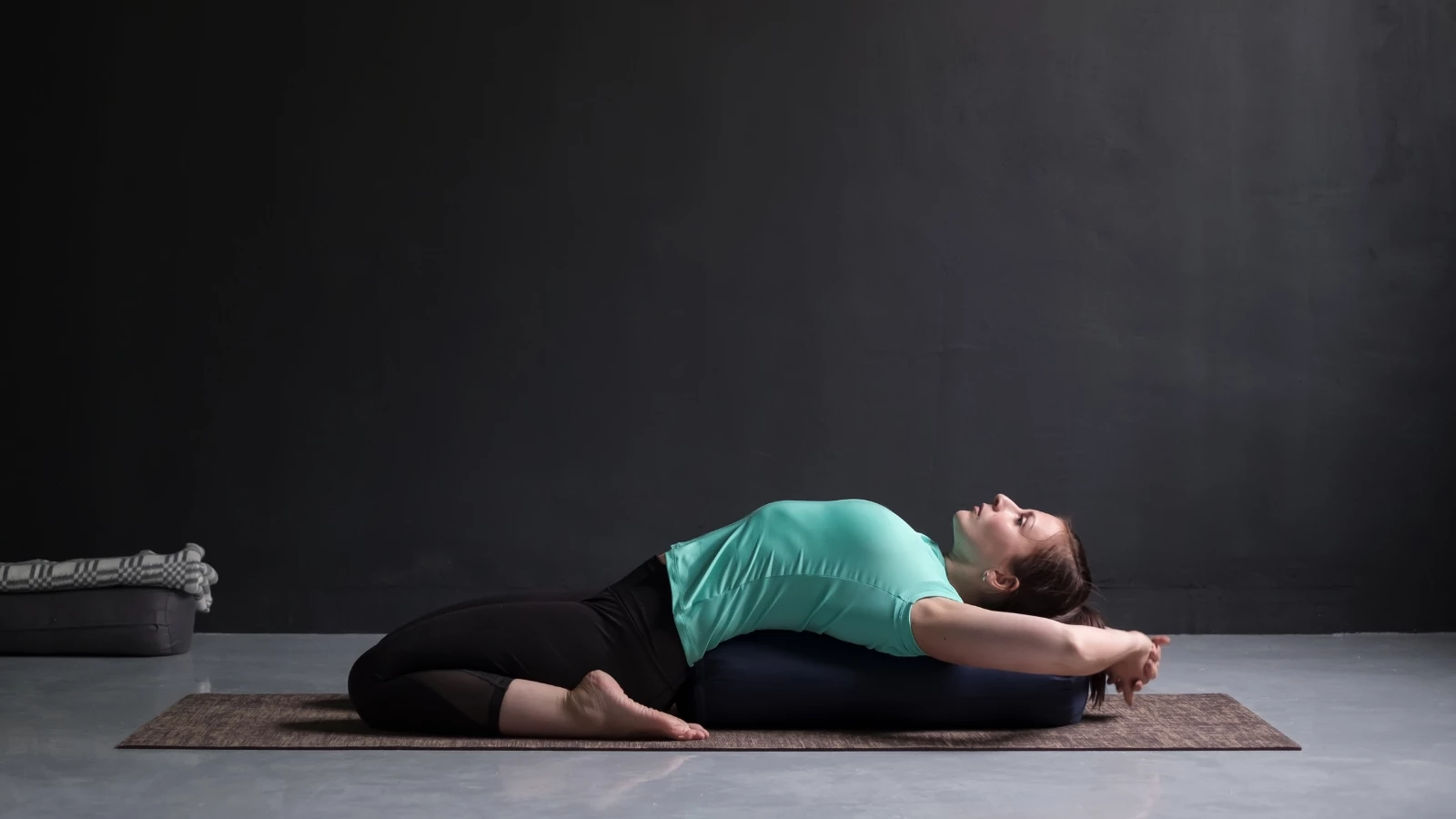3 Questions to Guide Your Daily Yoga Practice

Once you’ve established a regular time and place for your daily yoga practice, you can start to vary it to fit your mood, energy level, and physical needs. Whether you prefer practicing in the morning or at night, asking the following three questions daily will guide you in choosing the best practices for you.
Question 1. How Am I Today?
Start by checking in with yourself. What is your energy level? How does your body feel? What is your state of mind? Knowing how you are feeling and what you need from your practice will guide you in choosing the most appropriate poses and breath practices.
For example, if you wake up tired because your back was aching all night, then you might choose to lie on the floor and do poses that bring some mobility to your spine. Similarly, if you find yourself depleted after work, lying down with your legs propped up in Legs Up the Wall (Vipariti Karani) can help you find that second wind to get through your evening.
*See this video for three (3) different versions of Legs Up the Wall.
Question 2. Where and When Am I Doing My Daily Yoga Practice?
Once you’ve tuned into yourself, next tune into the world around you, in particular, the seasons and the weather. To counteract the chill of cold winter days, choose invigorating poses, such as Warrior I (Virabhadrasana I) or Plank Pose (Phalakasana). Or do 5 to 8 rounds of Kapalabhati Breath (Skull-Shining Breath) to generate more body heat and warm you up. On the other hand, when the dog days of summer arrive, practices that cool the body, such as Standing Wide Leg Forward Fold (Prasarita Padottanasana) or Cooling Breath (Sitali Pranayama) can bring much-needed relief.
Time of day plays an important role as well. Early mornings before sunrise lend themselves to a quiet, introspective practice. Starting slowly, by focusing on joint rotations. This wakes up your body and mind. Once warmed up, you can engage larger muscles. One way to do this is to do two or three seated poses, followed by one or two kneeling poses, and gradually move toward active standing poses, such as Sun Salutations (Surya Namaskar).
*Try this energizing 15-minute seated core strengthening practice.
3. What Needs Balancing?
The answer to the first question, “How am I today?” provides insight into this third one. The purpose of yoga is to bring peace and harmony to our bodies and minds. Noticing what is out of balance, whether there is too much or too little quality present, is an important guiding question.
For instance, if you feel heavy and tired, you might favor poses that bring more lightness into the body. Reaching your arms and gazing up in Mountain Pose (Tadasana) can lift your spirits to provide a greater sense of equilibrium. Conversely, if your mind is distracted or racing, grounding your awareness through seated or reclining poses, such as Bound Angle Pose (Baddha Konasana) or Bridge Pose (Setu Bandha Sarvangasana), can bring stability to both body and mind.
*Watch this video to learn a calming, balancing breath technique.
The question of what to do once you are on your mat can be tricky. Using these three questions to guide your choices will assist you in tailoring your daily yoga practice to bring harmony to body, mind, and spirit. You won’t necessarily get it right every time, but with repetition, you’ll become more skilled at selecting the best practices for you.
Happy practicing!
Also, read...
Healthy Heart: How Yoga Can Help Prevent Heart Disease
Jul 13 – Jennifer Williams-Fields E-RYT 200
Warrior I Pose: 5 Strengthening Variations
Jul 02 – Bridget Frederick, eRYT 500
Deepening Your Home Yoga Practice: An Interview with Judith Hanson Lasater
Jun 30 – staff writer YogaUOnline
Related courses
Breath as Medicine: Yogic Breathing for Vital Aging
With Doug Keller
Yoga and Myofascial Release: Releasing Chronic Tension with the Bodymind Ballwork Method
With Ellen Saltonstall
Yoga and Detoxification: Tips for Stimulating Lymphatic Health
With Lisa Levitt Gainsley
Reprinted with permission from WisdomTreeYoga.com

Beverly Davis-Baird, MA, e-RYT200/RYT 500, C-IAYT is a New Jersey-based yoga therapist, writer, and educator. She specializes in making yoga accessible for adults 50+, offering classes and workshops for back care, arthritis, bone health, balance, posture, and healthy aging. An educator at heart with over 20 years of experience as a public school teacher, Beverly brings her knowledge of individual learning styles to her classes, providing instruction that is clear, concise, inclusive, and compassionate. Bringing over 30 years of experience and training, she considers herself a lifelong learner and believes that the practice of yoga should bring spaciousness and release from tension, not create it. As such, she strives to make yoga accessible to people of differing abilities, believing the real benefits of yoga come from what is taken with you outside of class and into your life. To read her blog or learn more about her teaching schedule and latest offerings, please visit www.wisdomtreeyoga.com.
Recent articles
Yoga Anatomy: Release Your Tight Psoas Muscles with Clinical Somatics
Jul 16 – Sarah Warren
Dr. Ray Long: Stabilizing the Shoulders in Downward Dog and Upward Hands Poses
Jul 15 – By: Ray Long MD, FRCSC
Healthy Heart: How Yoga Can Help Prevent Heart Disease
Jul 13 – Jennifer Williams-Fields E-RYT 200
Categories
Upcoming courses
Breath as Medicine: Yogic Breathing for Vital Aging
With Doug Keller
Yoga and Myofascial Release: Releasing Chronic Tension with the Bodymind Ballwork Method
With Ellen Saltonstall
JOIN NOW!
Recent articles
Almost there...
Sorry, we couldn't find anything...
Anatomy
Yoga Anatomy: Release Your Tight Psoas Muscles with Clinical Somatics
The psoas muscle, formally called the psoas major, is a very important core muscle.…
Jul 16 – Sarah Warren
Anatomy
Dr. Ray Long: Stabilizing the Shoulders in Downward Dog and Upward Hands Poses
Today’s post will look at the scapular motion on the ribcage and the role…
Jul 15 – By: Ray Long MD, FRCSC
Yoga Practice Tips
Healthy Heart: How Yoga Can Help Prevent Heart Disease
Heart disease remains the leading cause of death in both men and women in…
Jul 13 – Jennifer Williams-Fields E-RYT 200



